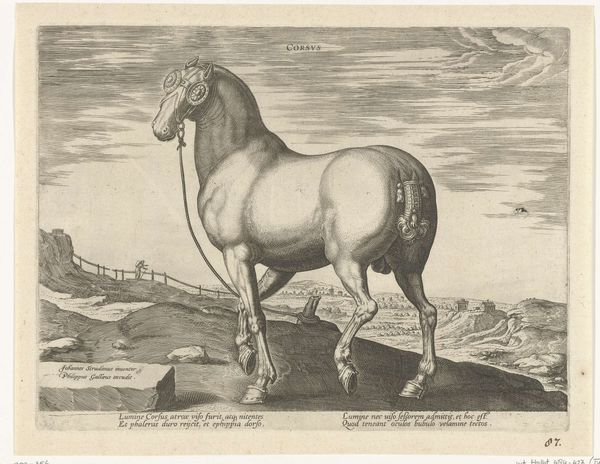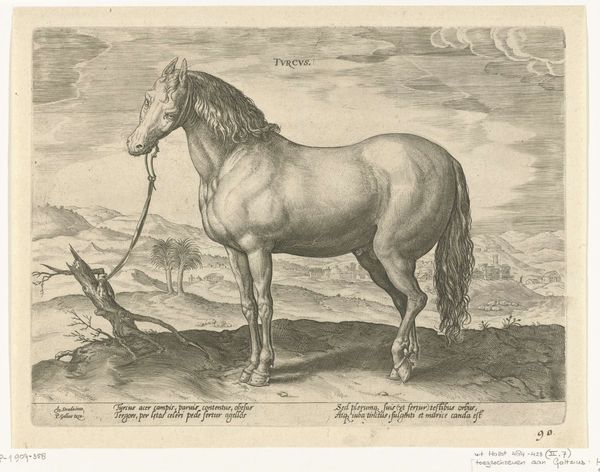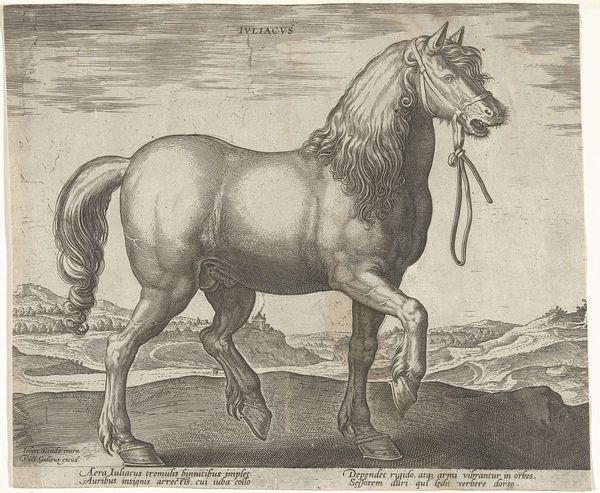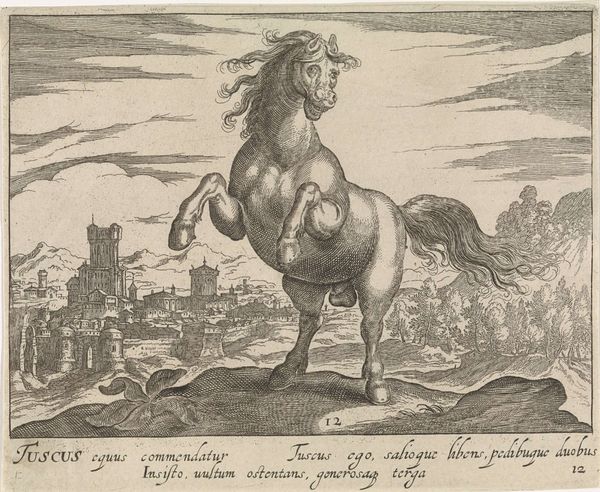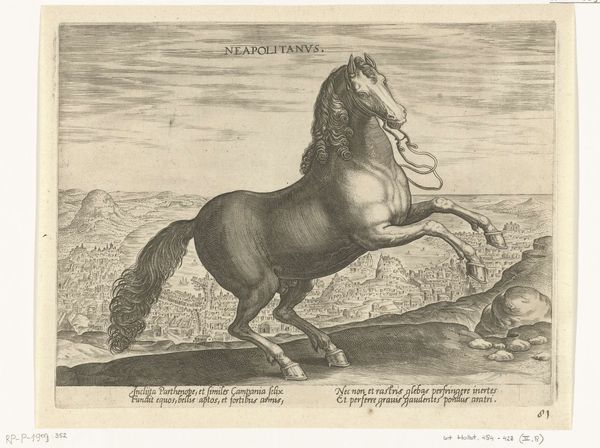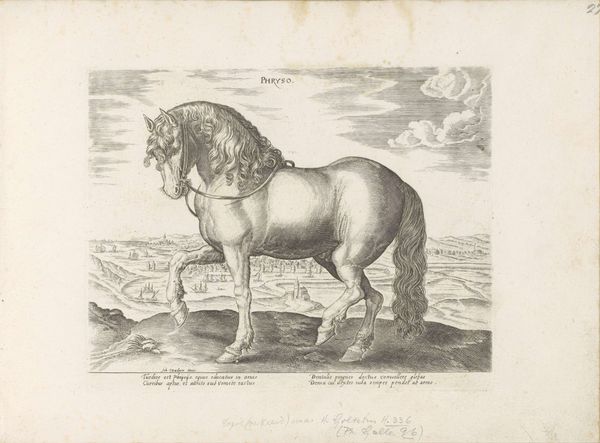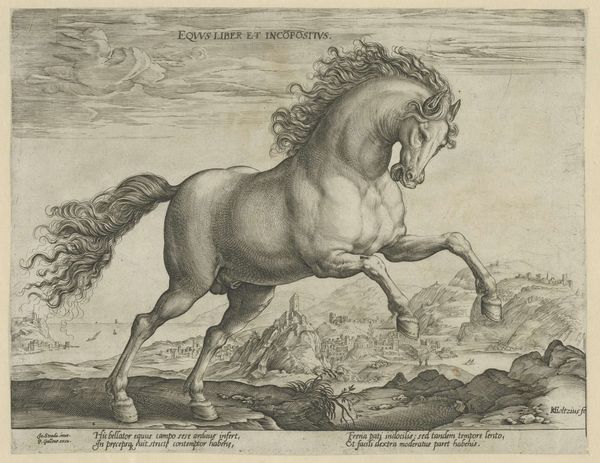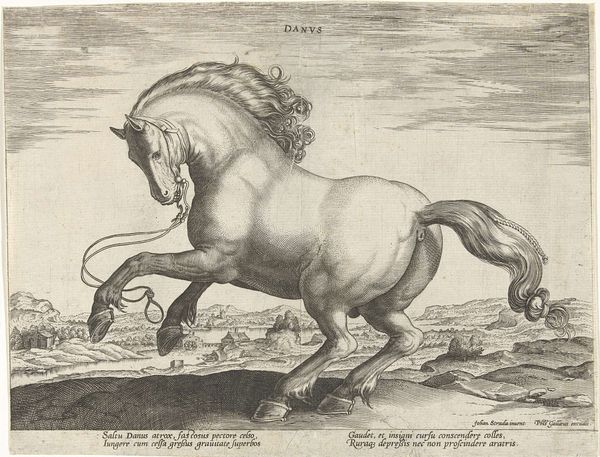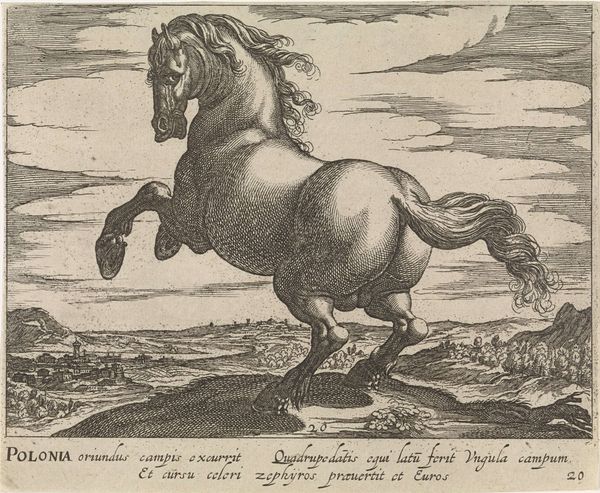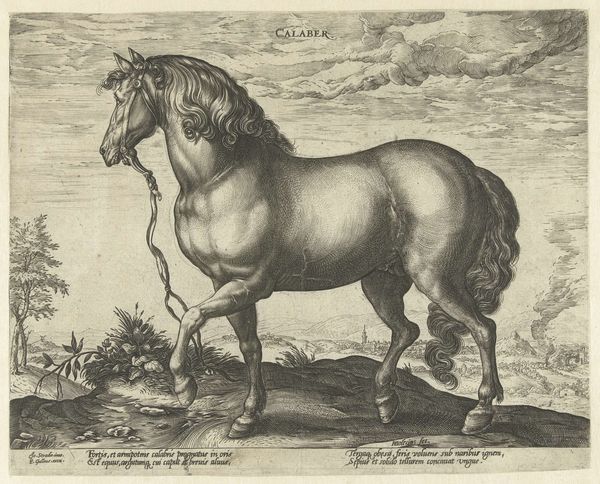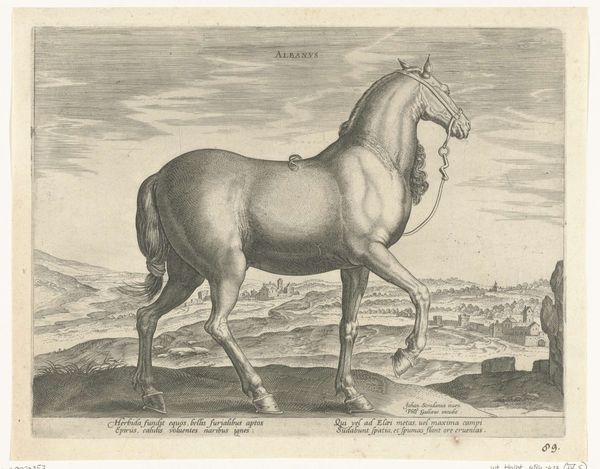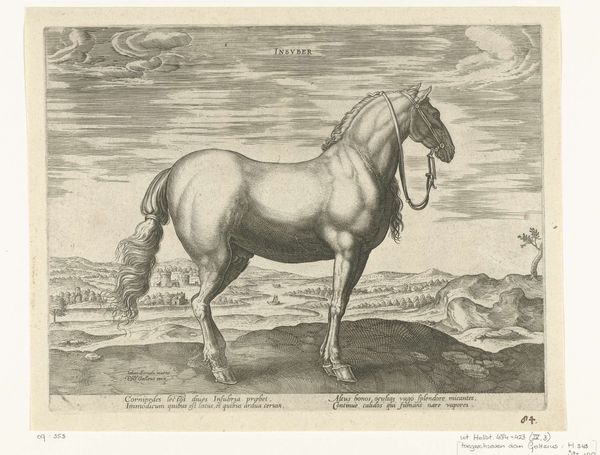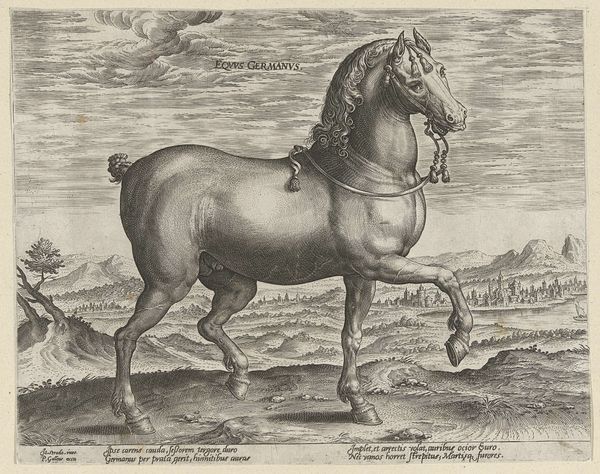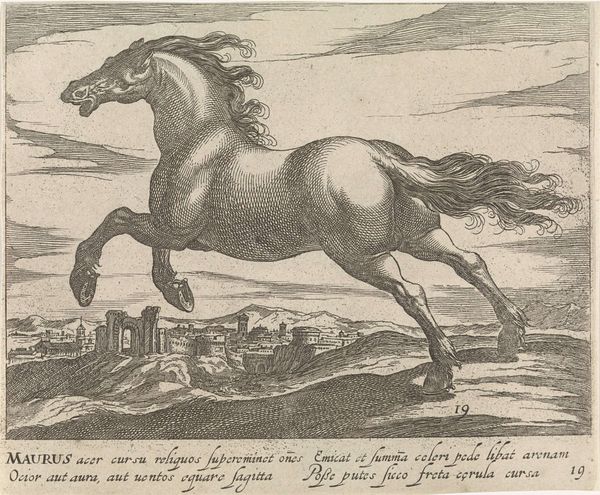
print, engraving
# print
#
old engraving style
#
landscape
#
figuration
#
horse
#
line
#
history-painting
#
northern-renaissance
#
engraving
Dimensions: width 273 mm, height 206 mm
Copyright: Rijks Museum: Open Domain
Curator: Let’s talk about this engraving, Paard uit Friesland, or Horse from Friesland, made by Hendrick Goltzius around 1578 to 1582. Editor: The detail is incredible! I’m immediately drawn to the horse's musculature and the elaborate curls of its mane. It's like a portrait, but of a horse. Curator: Goltzius was a master engraver, celebrated for his ability to render form and texture with incredible precision. He trained as a glass painter before turning to engraving. He and his workshop produced numerous prints. Look closely; you can see how the lines create shadows and volume. The print medium was undergoing significant refinement. Editor: Absolutely. You can almost feel the weight and smoothness of the horse's coat. And see how the lines form this grand, almost panoramic landscape stretching behind it? The setting places it firmly within the Northern Renaissance aesthetic, but also reminds me how engravers at this time became quite affluent businessmen. This makes you wonder what function the horse served in representing those wealthy workshops and families? Curator: This image wasn't merely a representation of wealth or status. It likely also played a role in the dissemination of knowledge about animal husbandry. It is interesting to observe that "PHRYSO" is the name printed near the horse. A nod perhaps to this horse’s celebrated lineage as a highly coveted and successful breed across Europe at this time? Editor: An excellent point, looking beyond the image and into the actual labor that went into this engraving enriches the experience so much. It's not just about depicting a horse beautifully; it's also about contributing to an understanding, promoting a certain image of power. Curator: And now, knowing more about the socio-economic and cultural context adds layers of meaning, even to the formal composition. Editor: It does. Now I see the image as both an object of aesthetic contemplation and a document that records something else.
Comments
No comments
Be the first to comment and join the conversation on the ultimate creative platform.
